
What’s your opinion on mushrooms? While many people today just think of them simply as food, they’re much more than that. Regardless of what you think about the common mushroom you might find as a topping on your pizza, there is a lot for one to appreciate about fungi. For thousands of years, our forebears have been using mushrooms as medicine. Remember that huge pharmaceutical companies and advanced drug research labs are quite a new invention; until relatively recently, we’ve depended on the world around us to provide the medicines we require.
Now the intersection of science and traditional medical knowledge is solidifying what our ancestors already knew about many mushrooms: they have amazing abilities! Medicinal mushrooms are one of the most promising areas of biochemical research today, but you don’t need to wait to begin taking advantage of some of those benefits. From potentially helping to fight against a decline in cognitive functions, to providing a much-needed energy boost for athletes, there are a wealth of positive effects.
What makes some mushrooms, like the Chaga, Reishi, and others, so useful? The answer lies in the fundamental nature of medicinal mushrooms; they are one of nature’s best adaptogens. Let’s consider what it actually means for a mushroom to be an “adaptogen” and how that benefits your body. Afterwards, we’ll discuss some of the specific benefits of these adaptogenic mushrooms, like Cordyceps Sinensis.
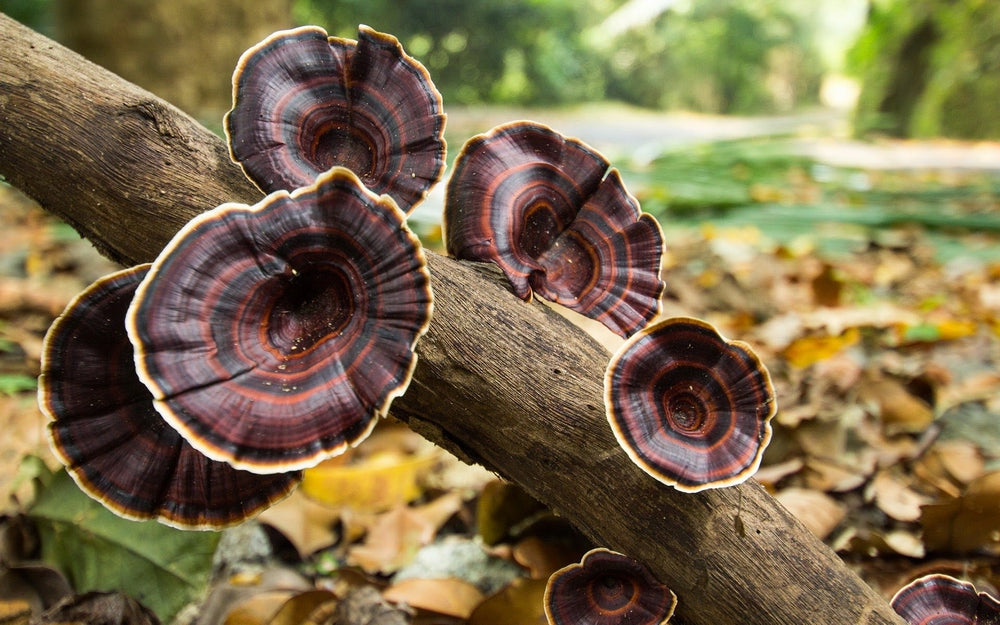
We can understand this word first by simply looking at one of its parts: the word adapt. It may sound obvious, but adaptogens help the body to adapt — but to what? The answer is stress, but not just the stress that you feel because of an upcoming deadline at work. We mean the stress that various ailments and organisms can place on your organs and bodily systems. Every human body exhibits something known as “homoeostasis,” a word which describes our internal balance or equilibrium. It’s the natural state where our body temperature is normal, stress hormones are low, and we are generally in good health. However, it’s easy for disease to disrupt your body’s homoeostasis.
That’s where adaptogens come into play. Many medicinal mushrooms are anti-microbial in addition to their many other positive traits which we will discuss in a moment. These properties all combine to encourage the body to adapt and respond to stresses and trauma more successfully. Just as a brief example, consider the humble shiitake mushroom, popular the world over. Scientists studying the effects of compounds isolated via shiitake mushrooms in mice discovered that it could impair the ability of leukaemia cells to complete mitosis successfully. As a potential anti-tumour drug, it seems highly promising. This study is just one example of how medicinal fungus can help the body to adapt to foreign invaders such as cancer.
Adaptogens like mushrooms contain compounds known as polysaccharides, such as beta-glucan, which act to reduce inflammation in the body while also signalling for help from the immune system. Triterpenes, another type of organic chemical, is also present in large amounts; these often help boost the body’s healing abilities in many ways. So now that we have a basic sense of why medicinal mushrooms are fundamentally helpful, how do we make the most out of them? Just eating them is okay, but it’s not the best way. To really derive the benefits from them, we must undertake a process to leach out all those precious polysaccharide chains.
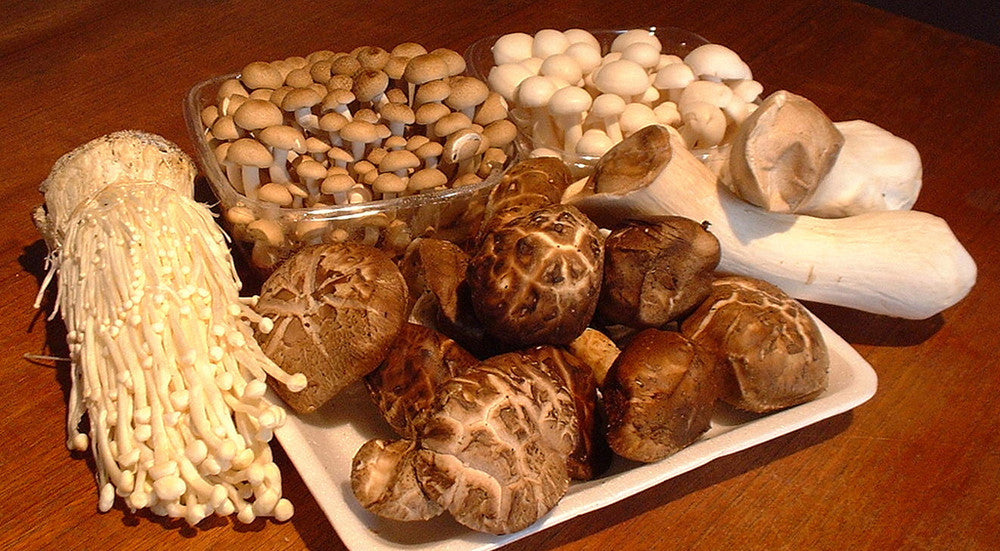
Getting to all of those beta glucans and triterpenes you want your body to utilise isn’t the easiest. For example, beta glucan polysaccharides are soluble in water, so simply boiling them or making a kind of “tea” with them could pull them out. However, you’re still leaving behind many other beneficial compounds in the mushrooms which cannot dissolve in water. How can we access them, then? The answer is a method called “double extraction,” which we also use in our products. The initial extraction of polysaccharides occurs as described, with water. However, the mushrooms can then be reprocessed by using a highly concentrated form of pure alcohol, also known as ethanol. Why?
The triterpenes in these mushrooms are “hydrophobic,” meaning they repel water, and is why we cannot extract them right away, and why we need time and alcohol on our side. As a strong natural solvent (and one which humans can tolerate with relative ease), ethanol can dissolve these compounds and extract them from the mushrooms. This method is the second leeching of the mushrooms. Therefore we call it a “double extraction.”
By the end of the process, we’ve removed as much as possible from the mushrooms. Afterwards, we’ll combine the two extractions into one complete package that allows your body to take advantage of all the polysaccharides and terpenes. That’s much more than your body’s own digestive system can manage on its own! Now, let’s consider some of the more specific benefits that you can find from using double extractions made from various types of mushrooms. What you learn may surprise you.
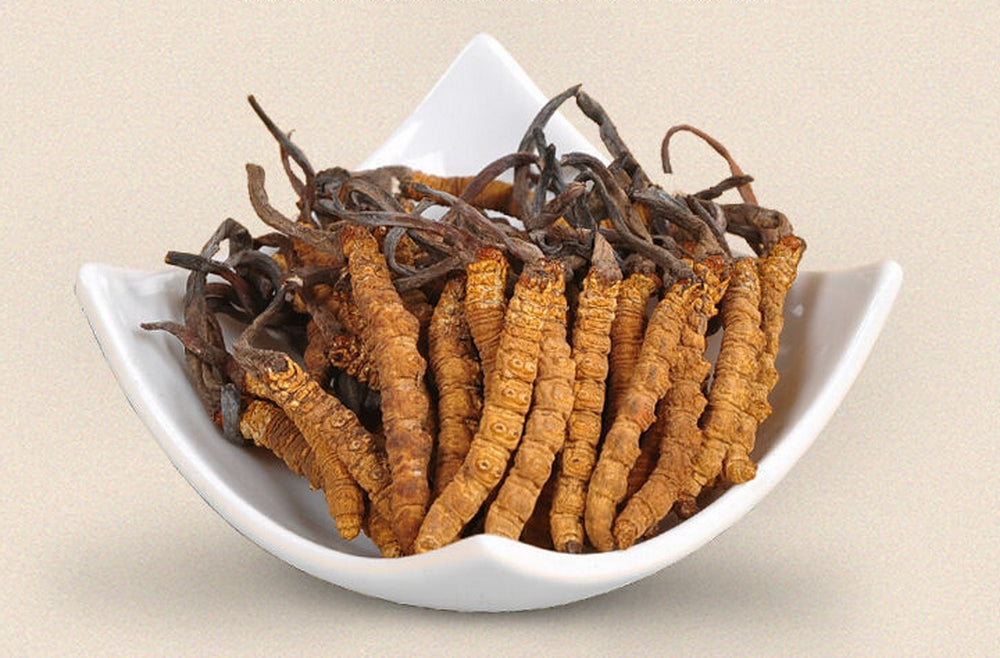
Physical fitness is of immense importance to living a healthy life, and athletes know that diet and supplements make up an important part of a smart approach. Did you know that some mushrooms can help athletes to perform better? A double extraction won’t suddenly equip you with superhuman footballing skills, but it can prime your body for more efficient reactions to the stresses of exercise. Consider one of the best adaptogenic mushrooms, Cordyceps Sinensis.
What are two of the most critical things for anyone exercising? The answer is straightforward: energy and oxygen. Cordyceps extracts can assist you in both those departments. Extracts of Cordyceps contain a crucial chemical called adenosine. If that rings bells from biology class in school, it should — it’s a fundamental component of ATP, or adenosine triphosphate. That’s what our cells use as their primary source of fuel for energy. In other words, cordyceps encourage the body’s cells to produce more ATP, thus providing you with deeper energy reserves to dig into when working on your fitness.
Meanwhile, studies also show that Cordyceps helps to increase oxygen utilisation by the body. When you’re pushing your muscles hard, and you need that oxygen to keep going, mushrooms could help! Some research has shown improvements of nearly 50% regarding blood oxygenation.
There’s a famous story about Chinese athletes in the 90s who breezed past World Record running places after training with a special extract made from Cordyceps mushrooms. While more research will help to pinpoint the mechanism through which this species aids the body, it’s clear it already can yield benefits. It’s also full of those anti-cancer beta-glucans we’ve mentioned — more on those later.
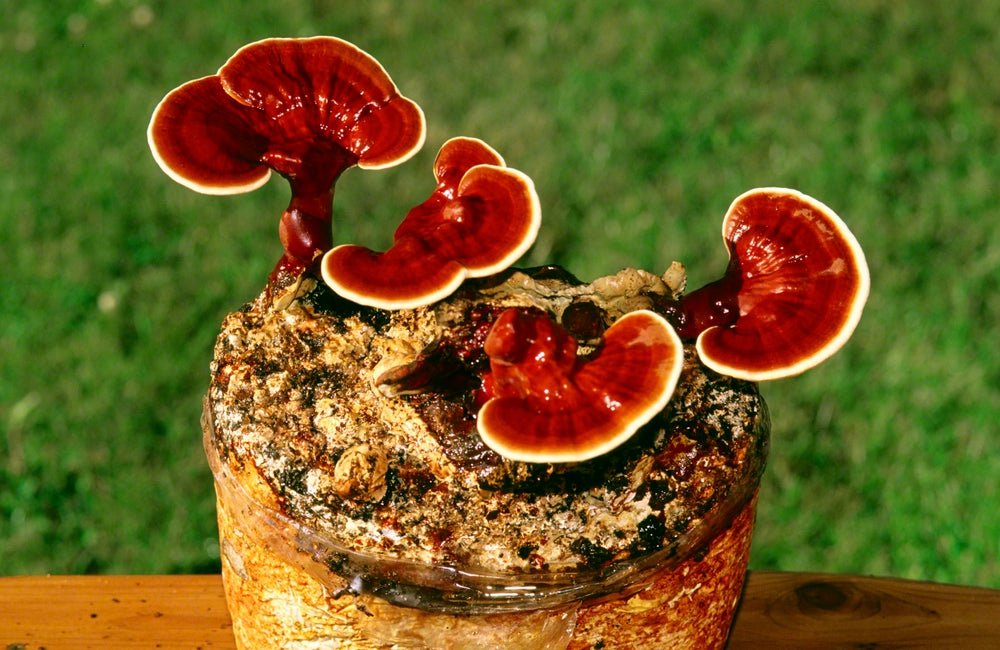
Cordyceps isn’t the only mushroom that can help the body better utilise oxygen and endure exercise, either. Reishi mushrooms, scientifically called Ganoderma Lucidum, also help oxygenate the blood more thoroughly. While you’re working on your cardio, Reishi mushrooms are also working on improving your heart health. Reishi has been shown to help reduce the viscosity of the blood, which can aid in lowering blood pressure for those suffering from hypertension.
As if that wasn’t enough already, Reishi extracts can also help to modulate blood glucose levels. People with diabetes take note — this is a promising area of research for sure. Research in mice showed a rapid response to the nutrients in Reishi.
There are many other medicinal mushrooms to consider beyond just the Cordyceps and Reishi varieties, though. Beyond boosting your athletic performance and helping fight against high blood pressure and diabetes, you can do yourself a world of good in other ways, too. What about the health of your mind and the rest of your body?

In an age of increased concern about Alzheimer’s disease, dementia, and similar illnesses, lots of effort focuses on finding ways to mitigate the risk for their development. Here medicinal mushrooms shine as well. Consider the Lion’s Mane mushroom, Hericium Erinaceus, which looks like many spindly white stalks drooping downward. This species, in particular, has an exceptional ability to help protect our minds from declining function.
How does this work? Compounds in Hericium trigger and stimulate the body to produce an essential protein called NGF, or “nerve growth factor.” The body produces this naturally to help keep your synapses in good shape, but its production can fall with time and age. Lion’s mane is an excellent way to give your brain a little extra boost. With the ability to even aid in regenerating nerves and synapses, this species hosts a lot of potential in spite of its strange appearance.
What about keeping the rest of your bodily systems in top shape to fight against illness and infection? Good news: many mushrooms not only do just that but show serious promise in the fight against cancer. With their ability to tweak the immune system and kick it into a higher gear, they’re worth attention as well. For example, consider the Chaga species.
This mushroom can stimulate our body to produce up to three times as many natural antibodies and “hunter-killer” cells. Those are the cells which seek and destroy foreign invaders. Chaga is additionally chock full of the aptly named “superoxide dismutase,” a powerful antioxidant. These prevent free radicals from causing the genetic and cellular damage which eventually leads to cancer.
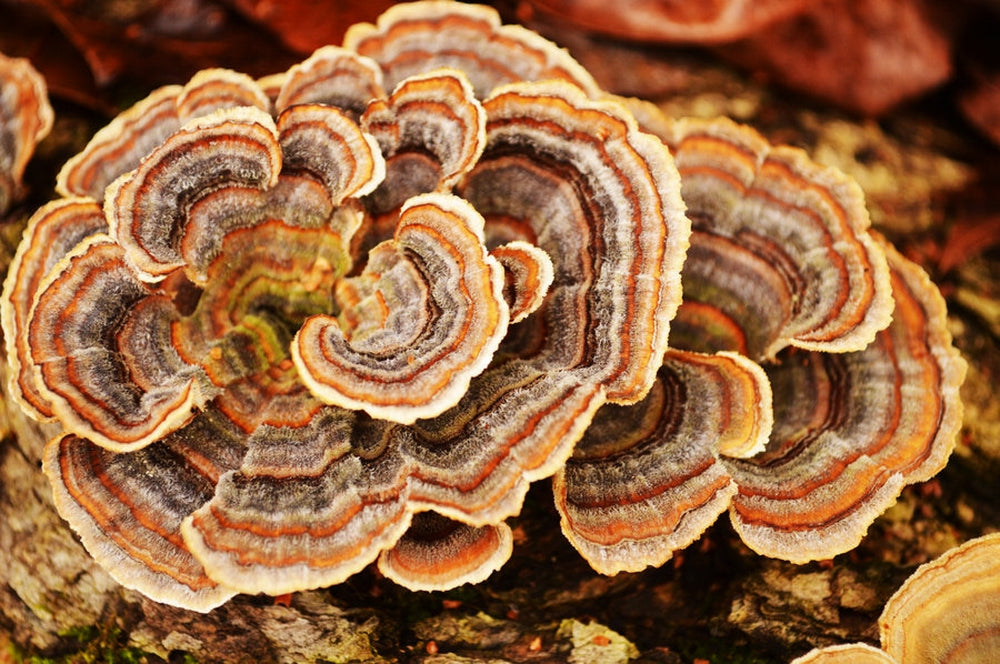
Speaking of how mushrooms used medicinally can exhibit anti-cancer properties, there are a few other species of mushroom that are also worth a mention. We’ve already mentioned Chaga, which can help to inhibit some types of tumours. A cousin of the aforementioned shiitake mushroom also falls into this category: the delicious maitake. The beta-glucans present in maitakes act as a barrier and a dampener for cancer cells, working to halt their spread and growth. That’s why Cordyceps are so potent too; not only do they aid with athleticism, but they’re also helping to keep guard of your body. The fact that maitakes are naturally delicious is simply a bonus.
Finally, let’s not forget one of the most colourful types of medicinal mushrooms, the turkey tails. Also known as Coriolus, you may have seen these growing off of fallen trees if you enjoy forest walks. Coriolus is profoundly rich in polysaccharides of many stripes. Turkey tails also work to scoop up free radicals, but more than that, scientists have shown their effectiveness in the fight against some cancers. Coriolus has an anti-tumour effect when used against cancer of the cervix.
Remarkably, turkey tails can enhance the effectiveness of other anti-cancer therapies as well, such as targeted radiation. The most promising results appear related to the treatment of cancer of the oesophagus as well as the lungs. This is all thanks to those polysaccharides we keep mentioning! It’s incredible to think that a colourful mushroom found on dead and dying trees could do so much to help us prolong our own lives. From Cordyceps to Coriolus, there’s no shortage of medicinal fungi to research, experiment with, and use to improve our health.
It’s clear that there is an immense range of benefits offered by a variety of mushrooms. Research into their benefits is ongoing, and more efforts begin every day to isolate the most useful properties and molecules to create better treatments. However, as we’ve mentioned before, you don’t need to wait for the drug industry to catch up to begin seeing the benefits.
With trusted methods like the double-extraction process for pulling out those helpful compounds, everyone can enjoy better health thanks to mushrooms. Whether you plan to try Cordyceps to run harder and faster or you’re interested in their anti-viral properties, you won’t view the humble mushroom as just a salad topping anymore!
Despite the benefits we’ve learned about protein powders, not all of them are keto-friendly. Just like any product for people on a low-carb diet, you need to read the label closely to make sure you’re not consuming added carbs and sugars.


Scott Reid
Author
Scott Reid is a 2 x Britain’s Strongest Man U105kg winner (2007 & 2008) and IFSA World's Strongest Man U105kg Competitor. He is an expert in strength and conditioning and also coaches functional nutrition. Scott’s passion for understanding the human body and how to optimise every aspect of it has driven him to study under legends such as Paul Chek. Scott now coaches MMA Athletes, Strongmen and Bodybuilders to name but a few, helping them to implement a well structured diet and become more powerful, explosive versions of themselves.